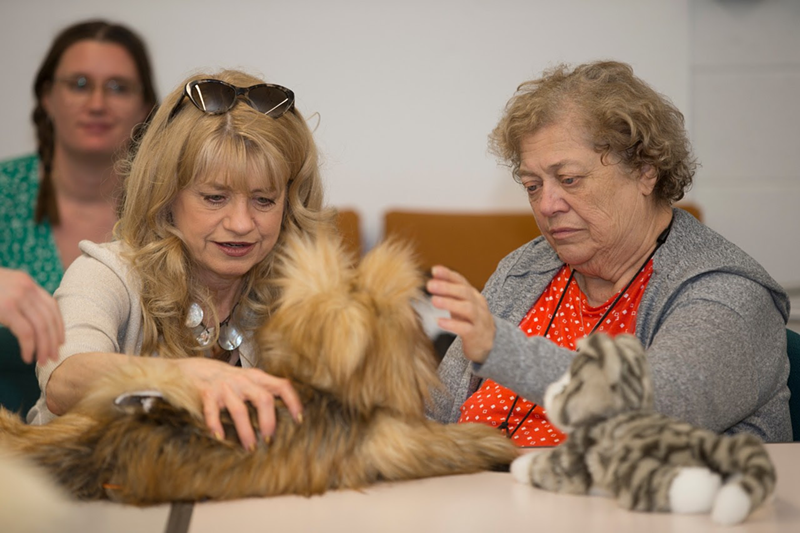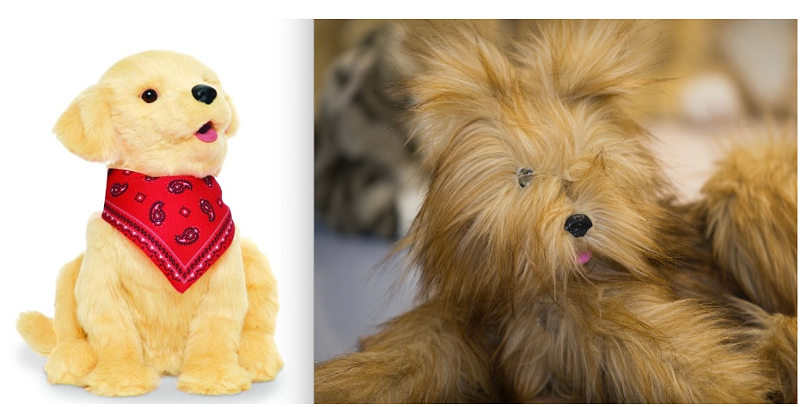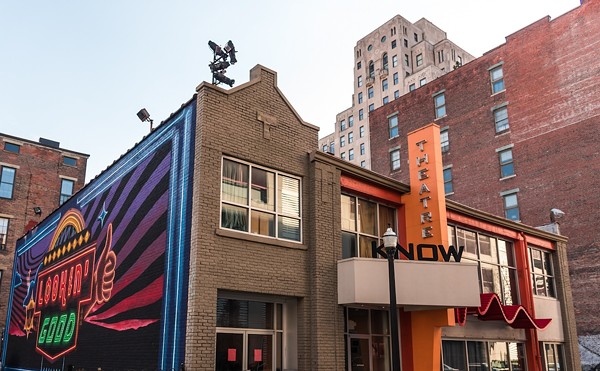
Older people tend to not have pets. Whether it’s too much upkeep or their living situation doesn’t allow for it, the fact remains true.
According to a press release from the University of Cincinnati, Claudia Rebola, an associate professor and graduate studies coordinator for UC’s College of Design, Architecture, Art and Planning, is trying to change this. She and the graduate students from DAAP and UC’s College of Engineering and Applied Science are sprucing up an existing line of robotic pets so they pass as “real” pets and can do more extensive skills, like calling emergency services, if needed.
Rebola is a professional on aging, and she researches disabilities, health, technologies, robotics and applying accessible design. This also isn’t her first rodeo is the robot pet business. In 2017, at the Rhode Island School of Design, she wrote a grant for a project called ARIES —Affordable Robotic Intelligence for Elderly Support — with researchers from Brown University and Butler Hospital and Hasbro. The team received a $1 million National Science Foundation grant to reenergize Joy for All Companion Pets, a small Hasbro brand purchased by Ageless Innovation (helmed by former Hasbro execs). The robotic pets have been on the market since 2015 and offer friendship to elderly buyers.
Rebola, along with the graduate students, are now focusing on making the pets more attuned to human emotions and “understanding the user, their needs and how to translate those needs into unique design opportunities for these pets,” she says in a release. The goal is to create "next-generation robotic intelligence that provides psychosocial support for older adults."
Cincinnati area older communities, including Scarlet Oaks Retirement Community and Episcopal Retirement Services, have been participating in a research study of the existing robotic pets. Feedback from the pilot program has led the class to completely redesign the existing dog. What was once a yellow dog that a little girl might get for a birthday present is now a realistic Yorkshire terrier.
Some students worked on the physical design of the dog, sourcing faux fur from Covington's Donna Salyer's Fabulous Furs to make it “more pettable and lifelike,” according to focus group participant and dialysis patient Kathi Lawrence. “I’m amazed that you made the dog as lifelike as the cat,” she said. “It’s not rigid like the other dog. The fur and color are wonderful.”

Others worked on the technological side and caregiving amenities, the press release says, focusing on four areas: detecting/preventing falls, connecting users to caregivers and loved ones, checking vital signs and providing helpful reminders. The class pictures a smart collar, much like a smart watch, for picking up signals and facilitating those functions.
“A robotic pet that combines the benefits of companionship with the opportunities for tech-based monitoring for older adults, especially those with cognitive impairment, is an idea with huge potential,” says UC geriatric medicine physician Dr. Jeffrey D. Schlaudecker in a release.
The redesigned pet would be able to call emergency services if the client fell, loved ones could call through the pet and the pet could monitor vitals, sleeping patterns and medication intake by way of a hug. The pet could also share that info with loved ones. The pet could serve as an alarm clock to remind the client of doctor’s appointments, birthdays and when to take certain medications. While reconstructing the robot, the students were mindful of the price and didn’t want the unfamiliar concept to feel like Big Brother.
“Ten years ago I was exposed to an organization that gave me funding to do a project for a retirement community. I fell in love, (reminding me) about why I was doing design and the role of technologies to really help people’s lives. Now I cannot stop. Whenever I can write a grant or work with students, it’s all about giving something meaningful for the older adult population, improving or saving their lives,” Rebola said.
Rebola and her team of students are continuing work on the project and hope to provide Ageless Innovations with a prototype pet to be launched in the market in 2020.





